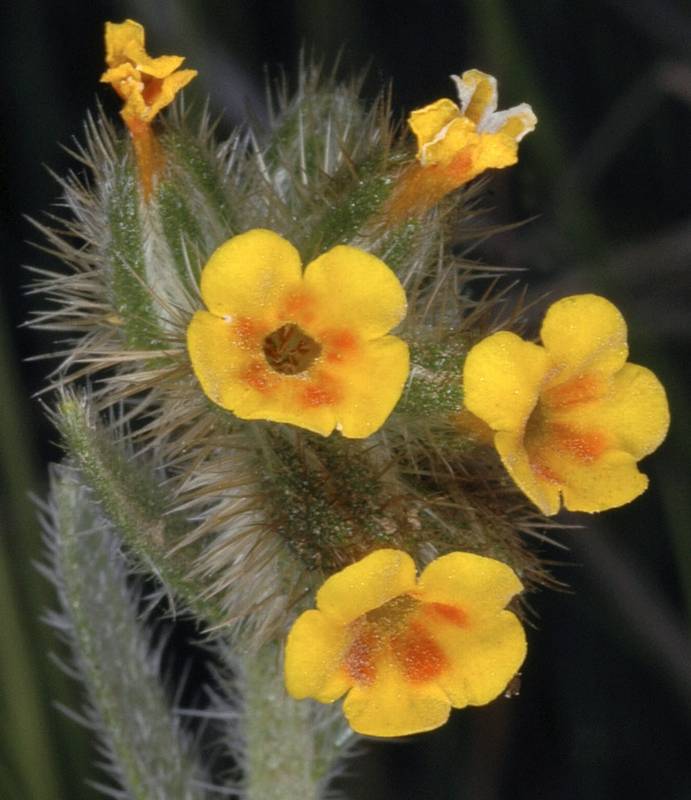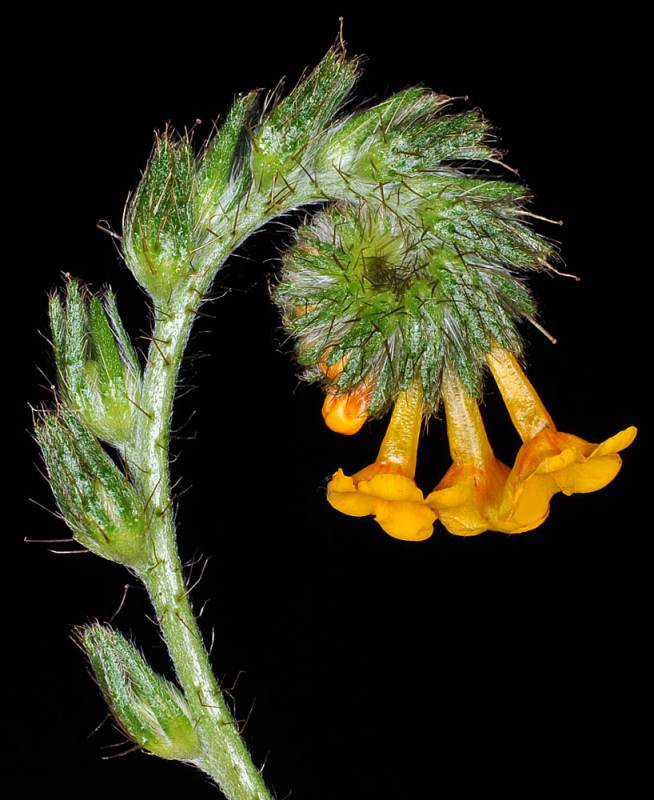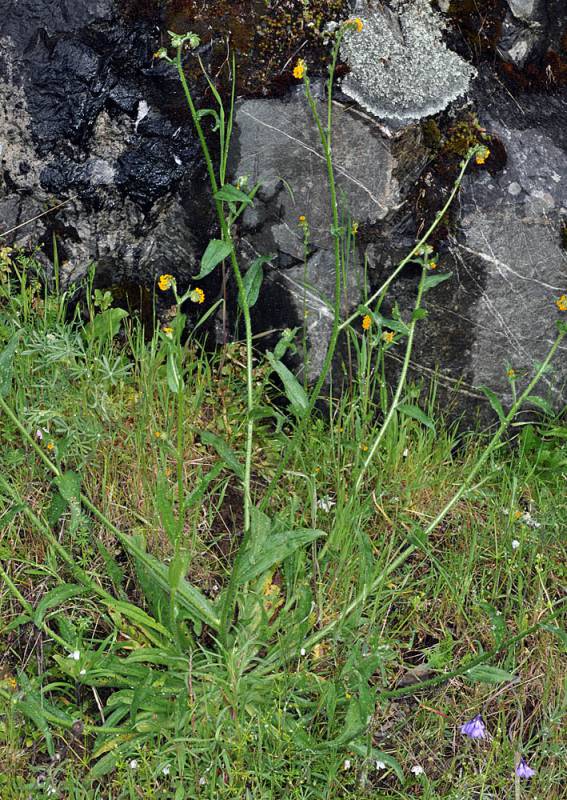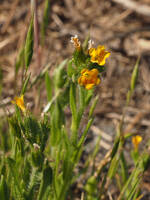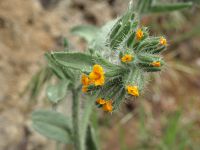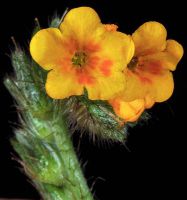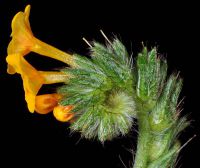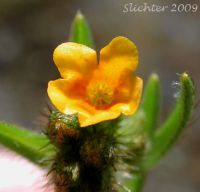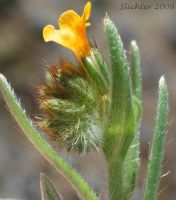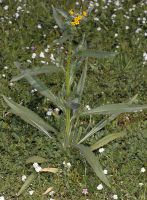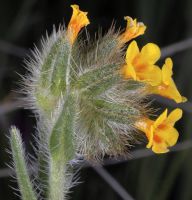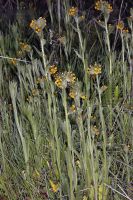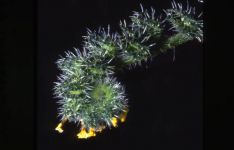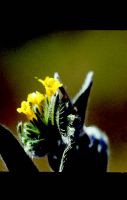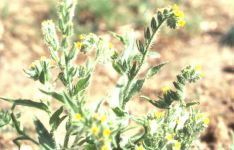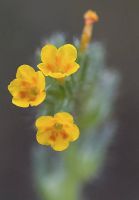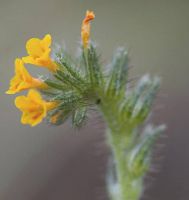Distribution: Occurring on both sides of the Cascades crest in Washington; British Columbia to Baja California, Mexico, east to Idaho, Utah, Arizona, and west Texas.
Habitat: Balds, meadows, prairies, roadsides, and other open areas at low to middle elevations.
Flowers: April-May
Origin: Native
Growth Duration: Annual
Conservation Status: Not of concern
Pollination: Bumblebees, bees, butterflies, flies
Stems ascendant to erect, green or brown, hirsute with hispid hairs; variable branches with stiff calcified or silicified walls.
Spreading and alternate, green, coarse-hairy to bristly, entire, apex acute to acuminate.
Inflorescence is a scorpioid cyme, axis coiled but unfurling with floral maturation; calyx lobes 5, equal in length, not fused above base; corolla 7-11 mm., tube exserted, tube 10-veined near base, typically orange, generally with 5 dark spots on petals; stamens attached above middle of tube with variable height, anthers generally appressed to stigma; style exserted to throat.
Nutlets 2-3.5 mm. long, tubercled, occasionally ridged.
Publication: Index Seminum [St.Petersburg (Petropolitanus)] ii. 26. 1836.
Amsinckia menziesii (Lehm.) A. Nelson & J.F. Macbr. var. intermedia (Fisch. & C.A. Mey.) Ganders [JPM]
PNW Herbaria: Specimen records of Amsinckia intermedia in the Consortium of Pacific Northwest Herbaria database
WA Flora Checklist: Amsinckia intermedia checklist entry
OregonFlora: Amsinckia intermedia information
E-Flora BC: Amsinckia intermedia atlas page
CalPhotos: Amsinckia intermedia photos

